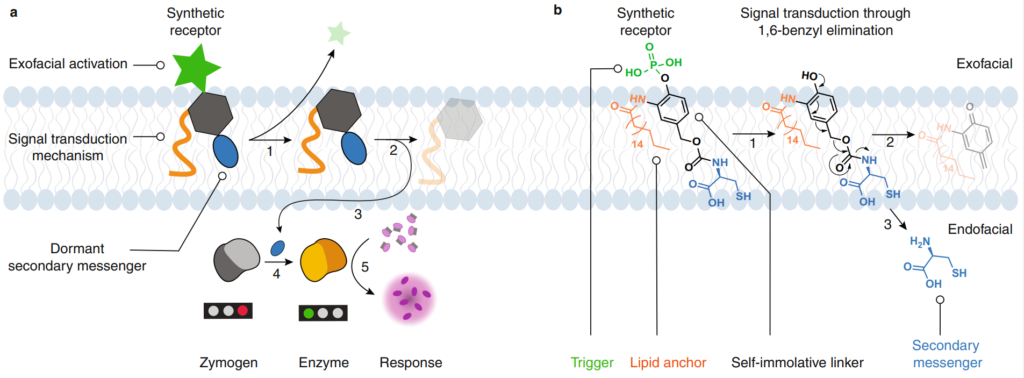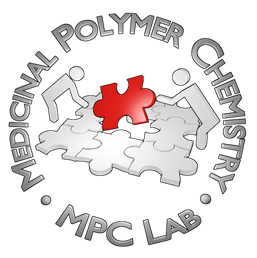Signal transduction across biological membranes is among the most important evolutionary achievements. Herein, for the design of artificial cells, we
engineer fully synthetic receptors with the capacity of transmembrane signaling, using tools of chemistry. Our receptors exhibit similarity with their
natural counterparts in having an exofacial ligand for signal capture, being
membrane anchored, and featuring a releasable messenger molecule that
performs enzyme activation as a downstream signaling event. The main difference from natural receptors is the mechanism of signal transduction, which
is achieved using a self-immolative linker. The receptor scaffold is modular and
can readily be re-designed to respond to diverse activation signals including
biological or chemical stimuli. We demonstrate an artificial signaling cascade
that achieves transmembrane enzyme activation, a hallmark of natural signaling receptors. Results of this work are relevant for engineering responsive
artificial cells and interfacing them and/or biological counterparts in cocultures.

